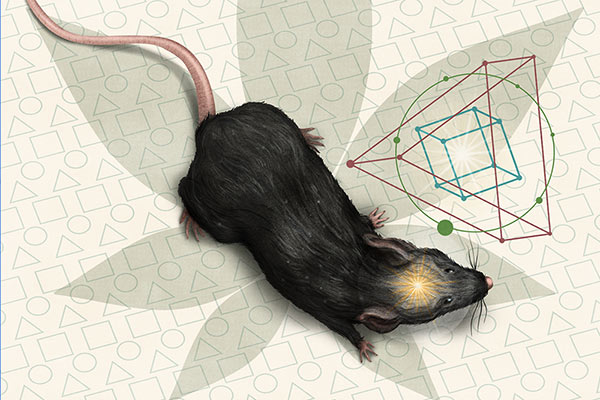
Equipes S.Oliet, G.Marsicano et al. dans Neuron
Astroglial CB1 Receptors Determine Synaptic D-Serine Availability to Enable Recognition Memory. Laurie M. Robin, Jose F. Oliveira da Cruz, Valentin C. Langlais, Aude Panatier, Stephane H.R. Oliet, Giovanni Marsicano. Neuron. Neuron. Published: May 17, 2018. Premiers auteurs : Laurie Robin, Jose Cruz et Valentin Langlais.
INSERM U1215, NeuroCentre Magendie,
CNRS, IMN
Comment
Astrocytes regulate synaptic plasticity and memory through different mechanisms, including the release of gliotransmitters that regulate neuronal activity. However, the cellular and molecular processes involved in modulating such astroglial functions are only scantly known. This study shows that endocannabinoid signaling in the hippocampus is necessary for object recognition memory by activating astroglial type-1 cannabinoid receptors (CB1). In turn, activation of astroglial CB1 receptors promotes NMDA receptor activity by favoring the synaptic availability of D-serine, eventually allowing the formation of long-term object recognition memory. These results were obtained thanks to the coordinated efforts of many scientists from the NeuroCentre Magendie, Bordeaux Neurocampus and abroad, in particular from Stephane Oliet’s (Valentin Langlais and Aude Panatier) and Giovanni Marsicano’s groups (Laurie Robin and Jose Cruz), who shared their complementary expertise in neuron-glial interactions, D-serine signaling, the physiological properties of CB1 receptors and behavioral analyses.
Summary
Bidirectional communication between neurons and astrocytes shapes synaptic plasticity and behavior. D-serine is a necessary co-agonist of synaptic N-methyl-D-aspartate receptors (NMDARs), but the physiological factors regulating its impact on memory processes are scantly known. We show that astroglial CB1 receptors are key determinants of object recognition memory by determining the availability of D-serine at hippocampal synapses. Mutant mice lacking CB1 receptors from astroglial cells (GFAP-CB1-KO) displayed impaired object recognition memory and decreased in vivo and in vitro long-term potentiation (LTP) at CA3-CA1 hippocampal synapses. Activation of CB1 receptors increased intracellular astroglial Ca2+ levels and extracellular levels of D-serine in hippocampal slices. Accordingly, GFAP-CB1-KO displayed lower occupancy of the co-agonist binding site of synaptic hippocampal NMDARs. Finally, elevation of D-serine levels fully rescued LTP and memory impairments of GFAP-CB1-KO mice. These data reveal a novel mechanism of in vivo astroglial control of memory and synaptic plasticity via the D-serine-dependent control of NMDARs.

Mise à jour: 27/06/18
